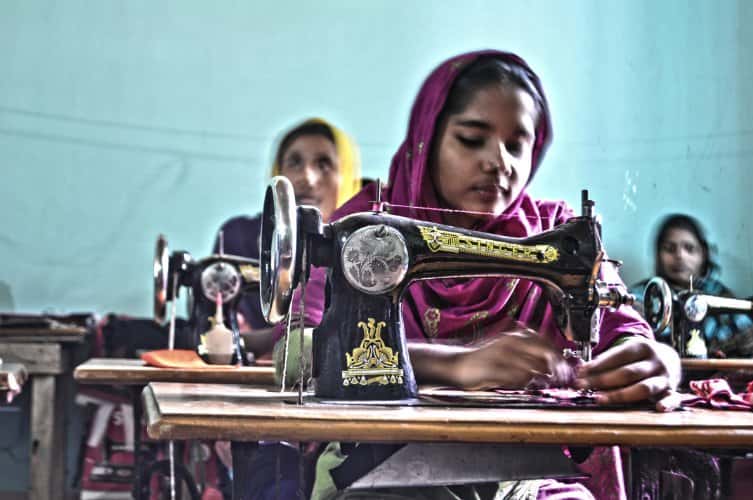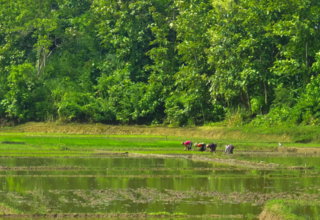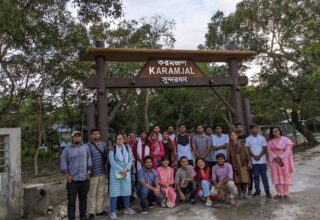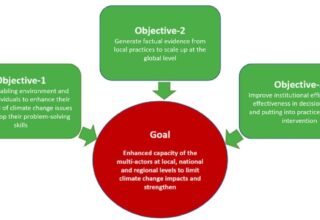
The impact of livelihood training for women looking to move
After receiving livelihood training, women previously engaged in fishing and farming are now moving to Dhaka or abroad to look for work. While there is an increasing number of women migrating, the overall percentage is still low, even if salaries elsewhere are higher for women who have the skills training.
Many women living in the coastal belt of Bangladesh are involved in either shrimp farming, farming, or domestic labour. However, due to numerous environmental hazards and socio-economic factors, many now find it difficult to live in the places of origin. Climate change is only expected to make things worse, particularly for livelihoods that are directly related to ecosystem goods and services. Many in coming years will be forced to move in search of new homes and opportunities.
With the advancement of many programs and vocational trainings, rural women of coastal Bangladesh are fortunately gaining the skills required for proper entrance into the workforce.
A national NGO, Adams, for instance runs livelihood training programs at two sites in southwestern Bangladesh — one in Khulna and the other in Bagerhat. These training centres provide programs for both men and women catering to various aspects of livelihood resilience, including financial management and utilization of social capital.
The training centres have classes on welding, computer office management, electronics, automobile repair, tailoring and sewing. While most of these classes have been operational since 2004, computing was introduced in 2006. As of 2016, 317 trainees have passed from these training centers and are now involved in a variety of occupations in Dhaka and abroad.
Out of 317 trainees, 191 (60.3%) are male and 126 (39.7%) are female. The average income of male trainees after they have left the centre is Tk22,354 a month while for female trainees it is only Tk9,228 a month. Furthermore, the highest incomes male graduates of the program receive are Tk90,000 and Tk60,000 whereas the highest income female graduates received were Tk40,000 and Tk11,000. One explanation for this is that women’s labor tends to be undervalued in the market compared to men’s labor.
Additionally, most of the women at the centre tend to take classes in tailoring and sewing, labor that is generally culturally understood as “feminine”. Whereas the classes for automobile repair, welding, and electronics are usually filled with all male trainees; and these are the jobs that tend to receive higher incomes. Computing also provides a good income, however, there is still relatively lower female participation in the classes (around 21.4%).
After the training, many migrate from their villages. Approximately 44.8% of the men, and 17% of the women went to Dhaka and started work. While women working in Dhaka have higher incomes than those who remain, the majority of female participants at these training centres decide not to move.
Why don’t more women decide to move to Dhaka, especially once they have received skills training from the Adams’ centres? Some researchers argue that there is still a lot of insecurity, especially for women, in moving from their homes to Dhaka. There is the threat of crime, robbery, kidnapping, etc. Other researchers point at the fact that it can be hard for the whole family to relocate to Dhaka and maintain a certain standard of living, and many families do not want female members of their family to relocate alone.
There are also those female migrants who travel abroad for work. Out of all the participants, only one female trainee from Adams travelled abroad to Oman to work as a tailor and receives Tk40,000 a month. In general, international labour migrants from Bangladesh tend to prefer to travel to Oman, Singapore, Bahrain, Dubai, and Malaysia for work.
According to UN Women Bangladesh and BRAC, women in Bangladesh have traditionally been secluded in their homes and isolated from participating in income generating activities. But over the last few decades, due to development interventions and increasing opportunity particularly in the garments’ sector, far more women are migrating to Dhaka and abroad for work.
Training programs need to do more to encourage women to enter the workforce, and give them viable skills beyond just the skills training, including monetary management and knowledge of their rights as employees.
While these training programs have opened a wide range of opportunities for rural women in the country, there are still many challenges to overcome — and livelihood trainings can play an important role.
Originally this article was published on June 29, 2018 at Climate-Tribune (Dhaka Tribune). The author Rupita Tahsin is an intern at ICCCAD and student at Bangladesh University of Engineering & Technology (BUET).






